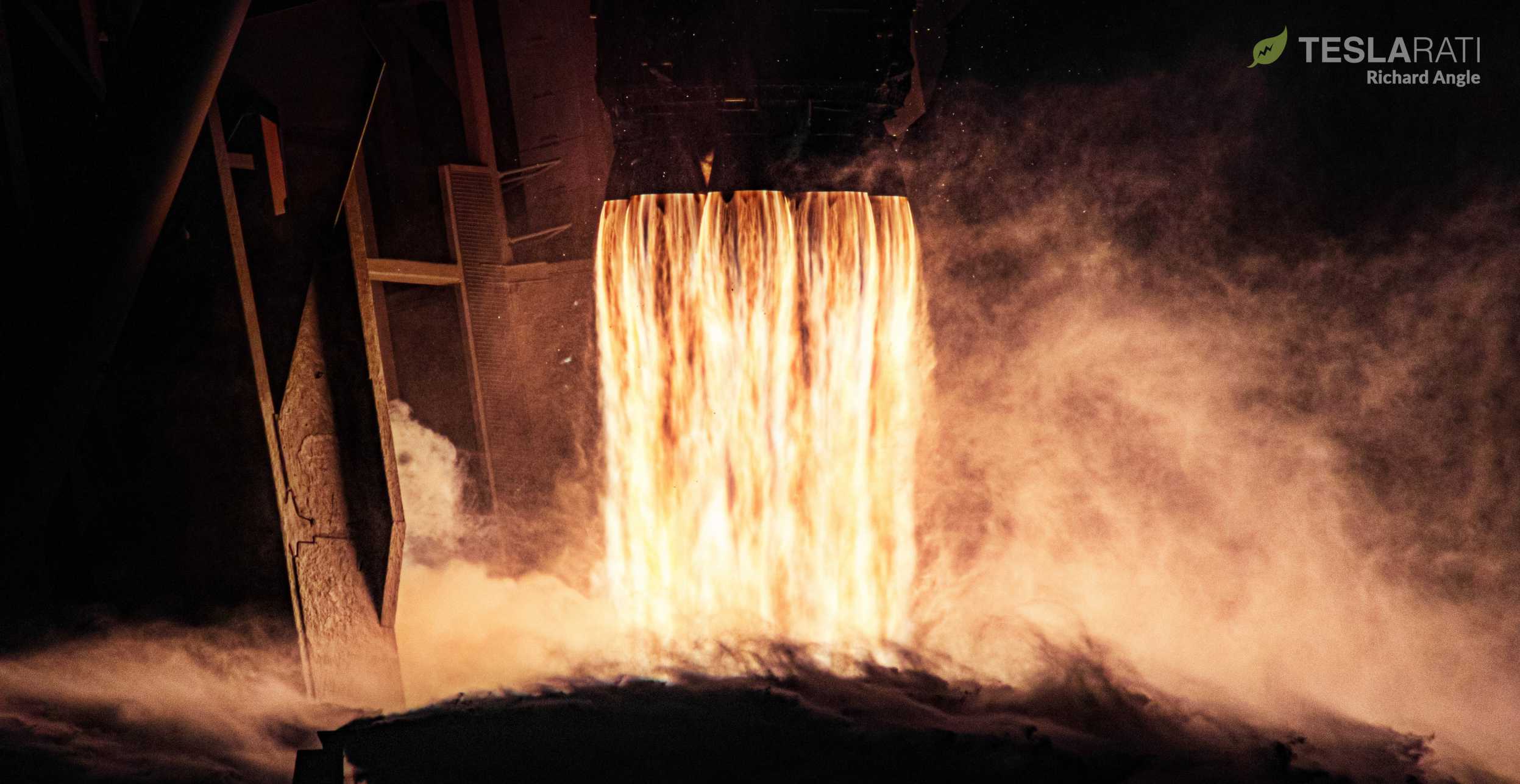

News
SpaceX puts 60 Starlink satellites in orbit with first rocket launch of the year [photos]
SpaceX has kicked off a record-breaking 2020 launch manifest with a spectacular combination of Starlink satellites and a Falcon 9 rocket, the first of perhaps two dozen such launches planned this year alone.
Falcon 9 booster B1049 supported the mission, becoming the second SpaceX rocket ever to complete four launches and landings after B1048 did it first in November 2019. Starlink-2’s Falcon 9 booster is now safely aboard drone ship Of Course I Still Love You and beginning the 600 km (375 mi) journey back to Port Canaveral, Florida, where it will likely be processed and turned around for a fifth launch in the near future.
Teslarati photographer Richard Angle was on-site to capture the event and caught a number of spectacular photos of SpaceX’s Starlink-2 launch, ranging from an excellent visualization of the rocket’s trajectory to a close-up view highlighting the fury of Falcon 9’s nine Merlin 1D engines seconds after liftoff.
Falcon 9 Block 5 boosters are loaded with some 520 metric tons (1.2 million lb) of liquid oxygen, refined kerosene (RP-1), helium, and nitrogen. At full throttle, the nine Merlin 1D engines that power each Falcon booster can produce more than 7600 kN (1.7 million lbf) of thrust, equivalent to more than 60 737 passenger jets chained together. At the same time, every one of those nine Merlin 1D engines likely consumes more than 270 kg (600 lb) of liquid oxygen and kerosene every second, with all nine engines combining to burn the equivalent of one and a half Tesla Model 3s worth of propellant per second.
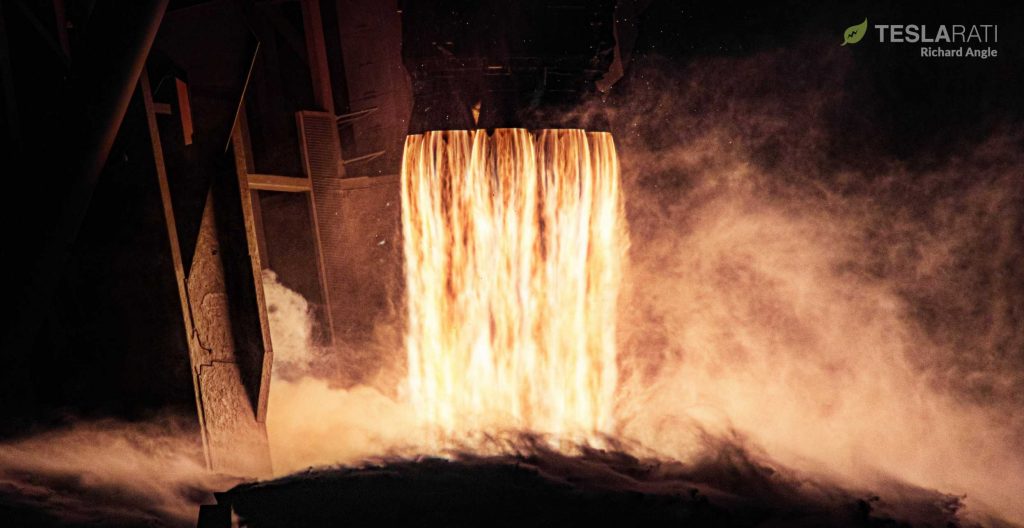
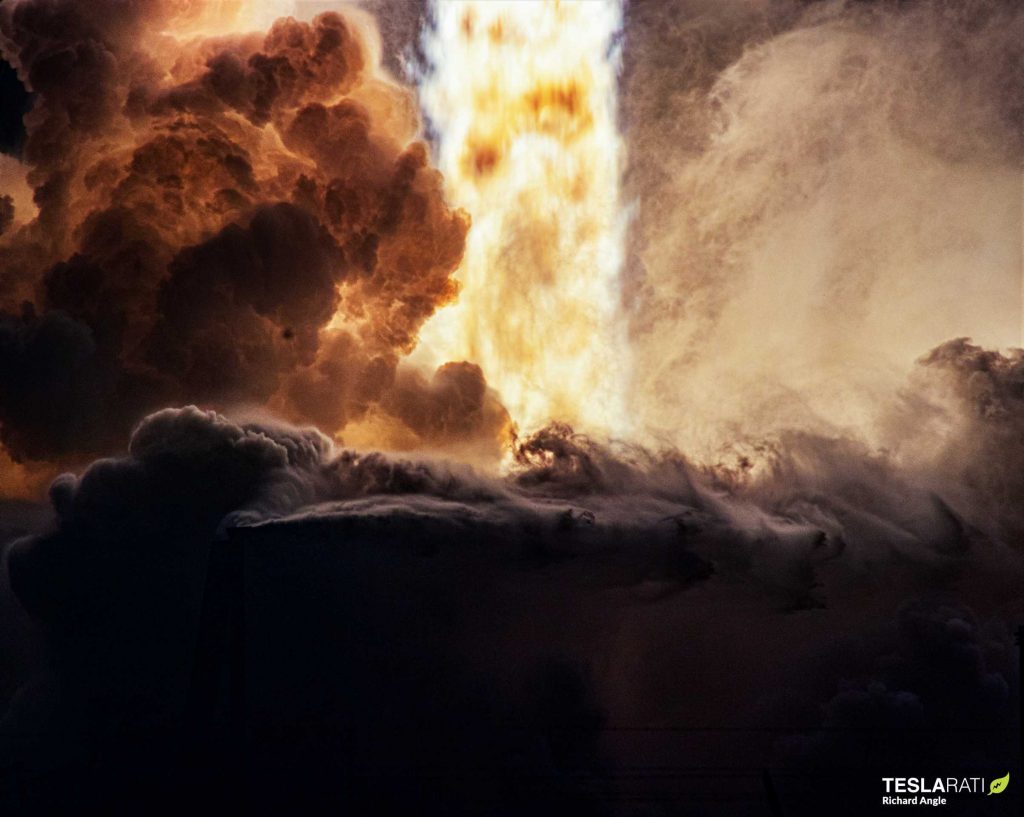
A step further, the 1.5 Teslas of propellant Falcon 9 boosters burn each second exits the nozzles of their nine Merlin 1D engines traveling almost 3 kilometers per second (1.9 miles per second) – more than 35 times faster than the fastest hurricane windspeeds every recorded. In simple terms, the exhausts of even tiny orbital-class rockets create a spectacularly violent and unearthly environment in the seconds immediately following liftoff, exaggerated by the ground and pad hardware reflecting all that energy and fury.
And Falcon 9 (let alone Falcon Heavy) is no tiny rocket. While it’s still extremely difficult to get a good sense of scale while looking at launch photos, it’s safe to say that photos of Falcon 9’s nine Merlin 1D engines shortly after launch undeniably capture at least a small sense of the sheer heat, fury, and stress experienced by SpaceX’s orbital launch pads. One of the most obvious features are giant clouds backlit by the rocket’s own engines, produced as a side effect of the common use of water deluge systems to protect launch pads and keep launch vehicles from damaging themselves.
In the handful seconds the rocket is near the pad, swimming pools worth of water are almost instantaneously vaporized by into superheated steam clouds by its exhaust and then violently buffeted by the shockwaves and vibrations they produce. In simple terms, the sound alone – let alone the heat or debris kicked up by the exhaust – would likely kill or at least severely injure an unprotected human observer standing nearby, while the heat would probably incinerate immediate bystanders.
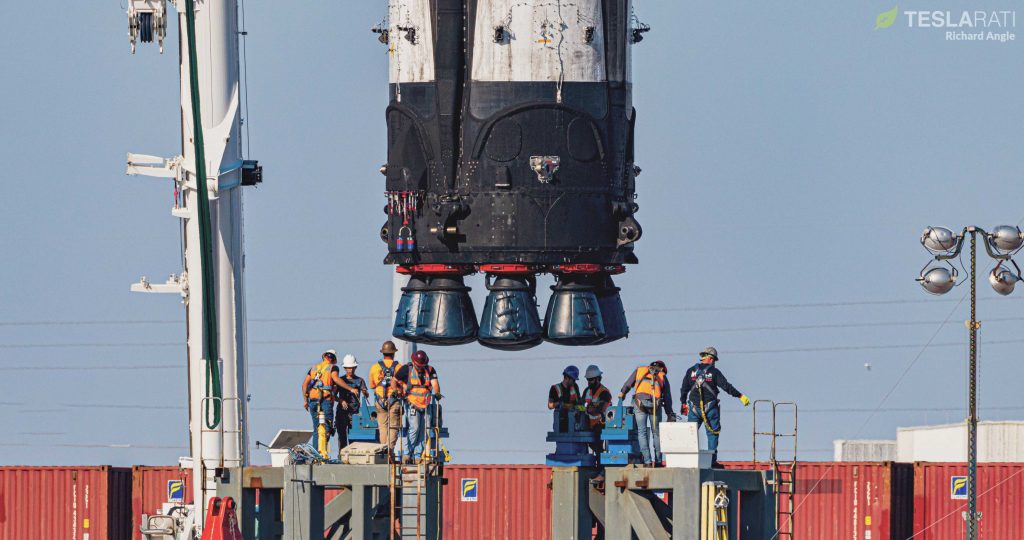
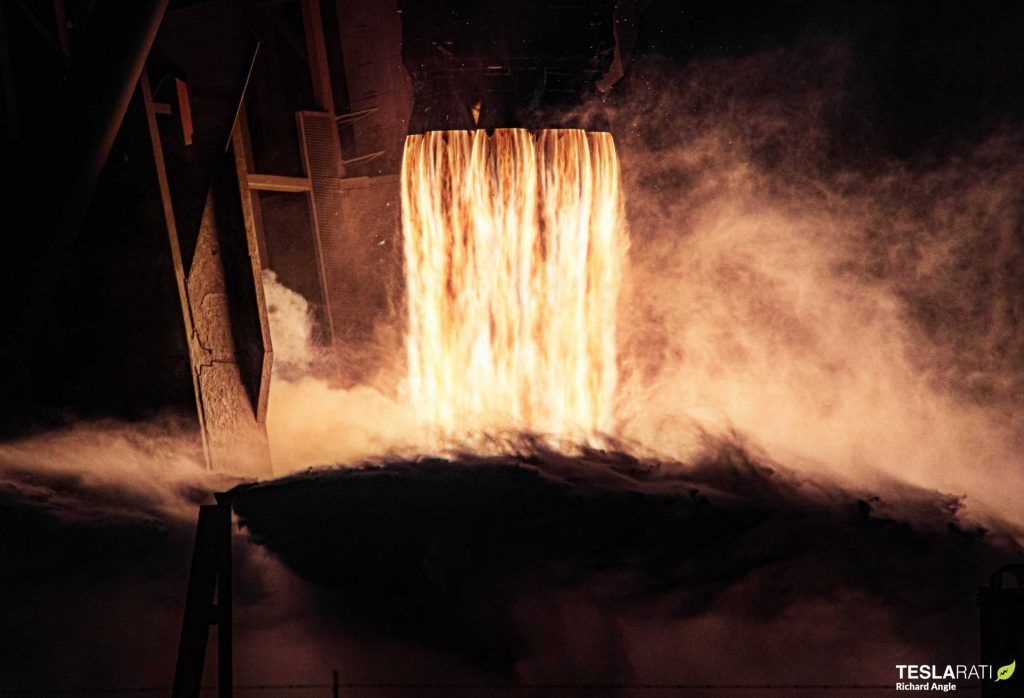
Regardless of the pedantry of observing rocket launches up close and really personal, January 6th’s Starlink launch is the first of as many as 36 launches SpaceX has planned in 2020 – some two dozen of which could end up being dedicated Starlink missions. SpaceX’s next two Starlink launches – Starlink-3 and -4 – are already scheduled to lift off as early as later this month.
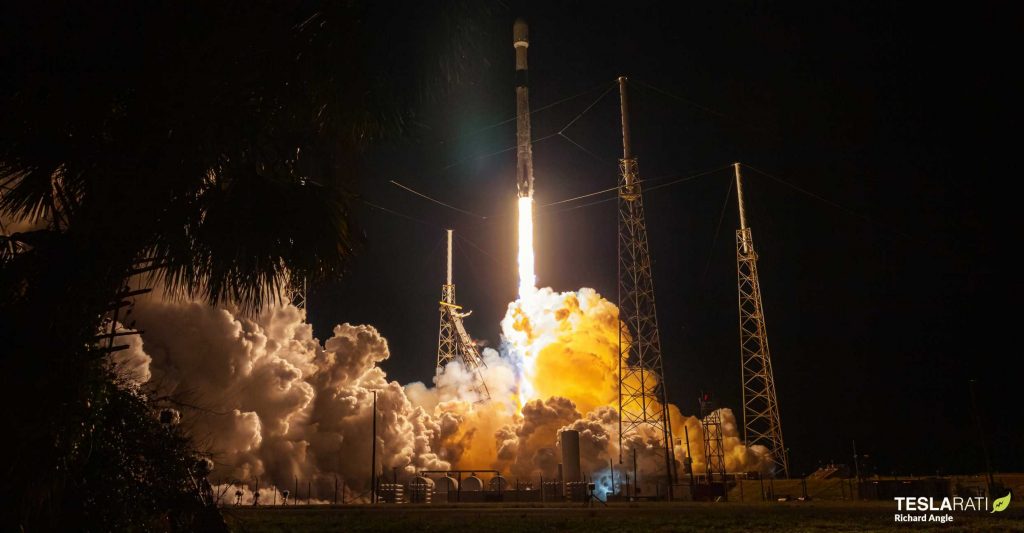
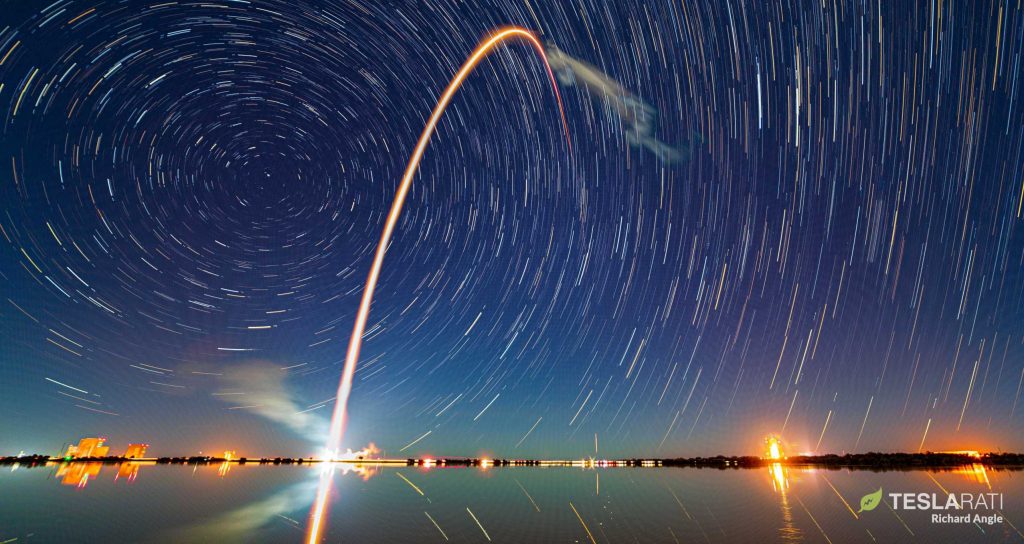
Check out Teslarati’s Marketplace! We offer Tesla accessories, including for the Tesla Cybertruck and Tesla Model 3.

News
Tesla FSD fleet is nearing 7 billion total miles, including 2.5 billion city miles
As can be seen on Tesla’s official FSD webpage, vehicles equipped with the system have now navigated over 6.99 billion miles.

Tesla’s Full Self-Driving (Supervised) fleet is closing in on almost 7 billion total miles driven, as per data posted by the company on its official FSD webpage.
These figures hint at the massive scale of data fueling Tesla’s rapid FSD improvements, which have been quite notable as of late.
FSD mileage milestones
As can be seen on Tesla’s official FSD webpage, vehicles equipped with the system have now navigated over 6.99 billion miles. Tesla owner and avid FSD tester Whole Mars Catalog also shared a screenshot indicating that from the nearly 7 billion miles traveled by the FSD fleet, more than 2.5 billion miles were driven inside cities.
City miles are particularly valuable for complex urban scenarios like unprotected turns, pedestrian interactions, and traffic lights. This is also the difference-maker for FSD, as only complex solutions, such as Waymo’s self-driving taxis, operate similarly on inner-city streets. And even then, incidents such as the San Francisco blackouts have proven challenging for sensor-rich vehicles like Waymos.
Tesla’s data edge
Tesla has a number of advantages in the autonomous vehicle sector, one of which is the size of its fleet and the number of vehicles training FSD on real-world roads. Tesla’s nearly 7 billion FSD miles then allow the company to roll out updates that make its vehicles behave like they are being driven by experienced drivers, even if they are operating on their own.
So notable are Tesla’s improvements to FSD that NVIDIA Director of Robotics Jim Fan, after experiencing FSD v14, noted that the system is the first AI that passes what he described as a “Physical Turing Test.”
“Despite knowing exactly how robot learning works, I still find it magical watching the steering wheel turn by itself. First it feels surreal, next it becomes routine. Then, like the smartphone, taking it away actively hurts. This is how humanity gets rewired and glued to god-like technologies,” Fan wrote in a post on X.
News
Tesla starts showing how FSD will change lives in Europe
Local officials tested the system on narrow country roads and were impressed by FSD’s smooth, human-like driving, with some calling the service a game-changer for everyday life in areas that are far from urban centers.

Tesla has launched Europe’s first public shuttle service using Full Self-Driving (Supervised) in the rural Eifelkreis Bitburg-Prüm region of Germany, demonstrating how the technology can restore independence and mobility for people who struggle with limited transport options.
Local officials tested the system on narrow country roads and were impressed by FSD’s smooth, human-like driving, with some calling the service a game-changer for everyday life in areas that are far from urban centers.
Officials see real impact on rural residents
Arzfeld Mayor Johannes Kuhl and District Administrator Andreas Kruppert personally tested the Tesla shuttle service. This allowed them to see just how well FSD navigated winding lanes and rural roads confidently. Kruppert said, “Autonomous driving sounds like science fiction to many, but we simply see here that it works totally well in rural regions too.” Kuhl, for his part, also noted that FSD “feels like a very experienced driver.”
The pilot complements the area’s “Citizen Bus” program, which provides on-demand rides for elderly residents who can no longer drive themselves. Tesla Europe shared a video of a demonstration of the service, highlighting how FSD gives people their freedom back, even in places where public transport is not as prevalent.
What the Ministry for Economic Affairs and Transport says
Rhineland-Palatinate’s Minister Daniela Schmitt supported the project, praising the collaboration that made this “first of its kind in Europe” possible. As per the ministry, the rural rollout for the service shows FSD’s potential beyond major cities, and it delivers tangible benefits like grocery runs, doctor visits, and social connections for isolated residents.
“Reliable and flexible mobility is especially vital in rural areas. With the launch of a shuttle service using self-driving vehicles (FSD supervised) by Tesla in the Eifelkreis Bitburg-Prüm, an innovative pilot project is now getting underway that complements local community bus services. It is the first project of its kind in Europe.
“The result is a real gain for rural mobility: greater accessibility, more flexibility and tangible benefits for everyday life. A strong signal for innovation, cooperation and future-oriented mobility beyond urban centers,” the ministry wrote in a LinkedIn post.
News
Tesla China quietly posts Robotaxi-related job listing
Tesla China is currently seeking a Low Voltage Electrical Engineer to work on circuit board design for the company’s autonomous vehicles.

Tesla has posted a new job listing in Shanghai explicitly tied to its Robotaxi program, fueling speculation that the company is preparing to launch its dedicated autonomous ride-hailing service in China.
As noted in the listing, Tesla China is currently seeking a Low Voltage Electrical Engineer to work on circuit board design for the company’s autonomous vehicles.
Robotaxi-specific role
The listing, which was shared on social media platform X by industry watcher @tslaming, suggested that Tesla China is looking to fill the role urgently. The job listing itself specifically mentions that the person hired for the role will be working on the Low Voltage Hardware team, which would design the circuit boards that would serve as the nervous system of the Robotaxi.
Key tasks for the role, as indicated in the job listing, include collaboration with PCB layout, firmware, mechanical, program management, and validation teams, among other responsibilities. The role is based in Shanghai.
China Robotaxi launch
China represents a massive potential market for robotaxis, with its dense urban centers and supportive policies in select cities. Tesla has limited permission to roll out FSD in the country, though despite this, its vehicles have been hailed as among the best in the market when it comes to autonomous features. So far, at least, it appears that China supports Tesla’s FSD and Robotaxi rollout.
This was hinted at in November, when Tesla brought the Cybercab to the 8th China International Import Expo (CIIE) in Shanghai, marking the first time that the autonomous two-seater was brought to the Asia-Pacific region. The vehicle, despite not having a release date in China, received a significant amount of interest among the event’s attendees.








